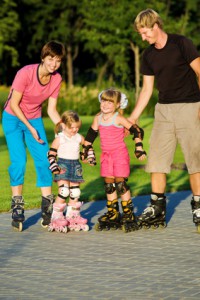Down the Rabbit Hole of Cooperation
Sometimes I am impressed and amazed by the simplest things. For instance, a study on children swinging together recently sent me on a journey down the rabbit hole of cooperation. Let me explain. The University of Washington released a study in which they randomly assigned pairs of four-year-old children (who did not know one another) into one  of three groups: in the first group pairs swung in synchrony with one another, in the second group pairs swung “out of synch” with each other, or in the third they didn’t even get to swing (I don’t want to be in that group!). Then, the four-year-old children engaged in a series of tasks to evaluate cooperation. The swinging four-year-olds who swung in synchrony cooperated more than those who swung “out of synch” and those who didn’t swing at all. They “strategized” more often, communicated more effectively, and completed the tasks more quickly. (Read about the study here). With this simple study I embarked on a brief journey down a rabbit hole in search of more information on influencing cooperation. I found:
of three groups: in the first group pairs swung in synchrony with one another, in the second group pairs swung “out of synch” with each other, or in the third they didn’t even get to swing (I don’t want to be in that group!). Then, the four-year-old children engaged in a series of tasks to evaluate cooperation. The swinging four-year-olds who swung in synchrony cooperated more than those who swung “out of synch” and those who didn’t swing at all. They “strategized” more often, communicated more effectively, and completed the tasks more quickly. (Read about the study here). With this simple study I embarked on a brief journey down a rabbit hole in search of more information on influencing cooperation. I found:
- Joint music-making leads to spontaneous cooperation and increased “helping” behaviors. (Read more here).
- Moving in synchrony with an experimenter led infants to be more cooperative with that experimenter (Read more here).
My run down the rabbit hole continued, but you get the idea: engaging in synchronous behavior (moving together, making music together) leads to greater cooperation. So, do you want more cooperative children? Swing in synchrony with them. Dance together. Go for a walk and walk the same cadence…”left, right, left, right, left.” Sing together—the same song in the same key of course. Have fun…together…at the same pace. The result? Children who are more likely to cooperate with you! Now that is worth the fun!
-0 Comment-